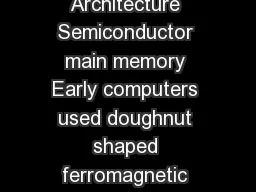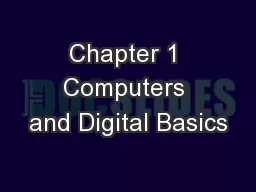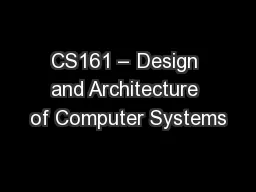PDF-Chapter Internal Memory Computer Organization and Architecture Semiconductor main memory
Author : luanne-stotts | Published Date : 2014-11-29
g a core dump Semiconductors are almost universal today Memory Cells Properties Exhibit two stable or semi stable states representing 1 and 0 Capable of being written
Presentation Embed Code
Download Presentation
Download Presentation The PPT/PDF document "Chapter Internal Memory Computer Organi..." is the property of its rightful owner. Permission is granted to download and print the materials on this website for personal, non-commercial use only, and to display it on your personal computer provided you do not modify the materials and that you retain all copyright notices contained in the materials. By downloading content from our website, you accept the terms of this agreement.
Chapter Internal Memory Computer Organization and Architecture Semiconductor main memory: Transcript
Download Rules Of Document
"Chapter Internal Memory Computer Organization and Architecture Semiconductor main memory"The content belongs to its owner. You may download and print it for personal use, without modification, and keep all copyright notices. By downloading, you agree to these terms.
Related Documents














